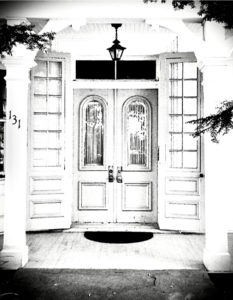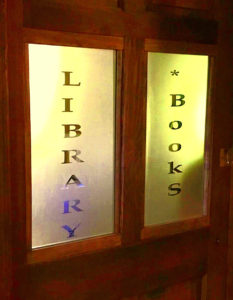May 3, 2021
By Arthur H. Gunther III
thecolumnrule.com
ahgunther@yahoo.com
When you go to an art museum, the standard pose of course has you pondering in front of a particular work, perhaps stepping back, putting one hand under chin, tilting head, moving forward, all in a studious attempt to “get” the painting, photograph, sculpture, woodcut, print, collage, whatever. Some of us do this studiously, some in affectation, some because we are simply joining the crowd. Others don’t have any pose and are just tagging along, with a spouse or friend, even under mild protest.
The point, whether there is a workable pose or not, is that what is in the eye of the beholder is central to the art experience. The person who just tags along but who might take a glance up at, say, Edward Hopper’s “Nighthawks,” the well-known film-noir painting of a night diner scene in 1940 lower Manhattan, might in that instant understand more about the work than the fellow who has stood before this wide horizontal piece 20 times with hand under chin.
There is a dialogue going on between artist and viewer, and the language and its comprehension come from that simple but deep-in-subtlety well of “going beyond” understanding that Ralph Waldo Emerson wrote about. In “Nighthawks,” the viewer “transcends” any actual experience in a diner to understand beyond.
Hopper, the famed American realist painter, uses the bright inside light of the corner diner to contrast with night darkness. The light reveals the faces of the four figures – the counterman, the couple (perhaps Edward and his wife, artist Jo Nivison) and a man opposite. This light is transcendental – beyond ordinary perception – a realism that we normally do not notice. Hopper’s paintings are infused with that light. Even the shadows are functions of it, as are the people.
That’s my take on “Nighthawks” and on Hopper, a painter well received in his time but much more so in his revival, which began two decades or so ago. This is the artist most often characterized as the “lonely painter,” whose urban oils are painted with figures who do not look at one another, who instead seem in isolated thought or which have no people in them at all. His Cape Cod summer works – oils and watercolors – are brighter than the city ones, yet are as transcendental in the use of light, a metaphor for revelation and understanding. But you, the viewer, the self-reliant as Hopper would have you be, has to do the work. He will not instruct you.
I do see not loneliness in “Nighthawks” but urban alienation, which is the cityite’s cautious way of bonding. Three people sit on diner stools, two may be strangers to the third; they each need some degree of company (because they are human) but cannot speak to one another readily, as is the urbanite’s apprehensive, even suspicious way, so they sit in silence, not looking at one another but surely knowing another human being is next to them. That is not loneliness but the gothamite’s survival, his self-reliance.
So, “Nighthawks” becomes Emerson-like, taking the viewer, whether he has the standard pose or not, to the inner, spiritual and/or mental essence of us living creatures. There is also, like Emerson, utter simplicity, so reduced, but yet saying so much. The individual exists even in the big city and the broad summer experience. There is the dignity of each of us, going beyond ordinary description.
There is art everywhere – in old architecture, in sunlight rooms, in a pre-war diner – and to me that is what Hopper is all about. The art museum pose, certainly useful, isn’t necessary to understand that.
The writer is a retired newspaperman.
-30-



